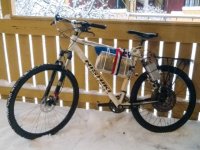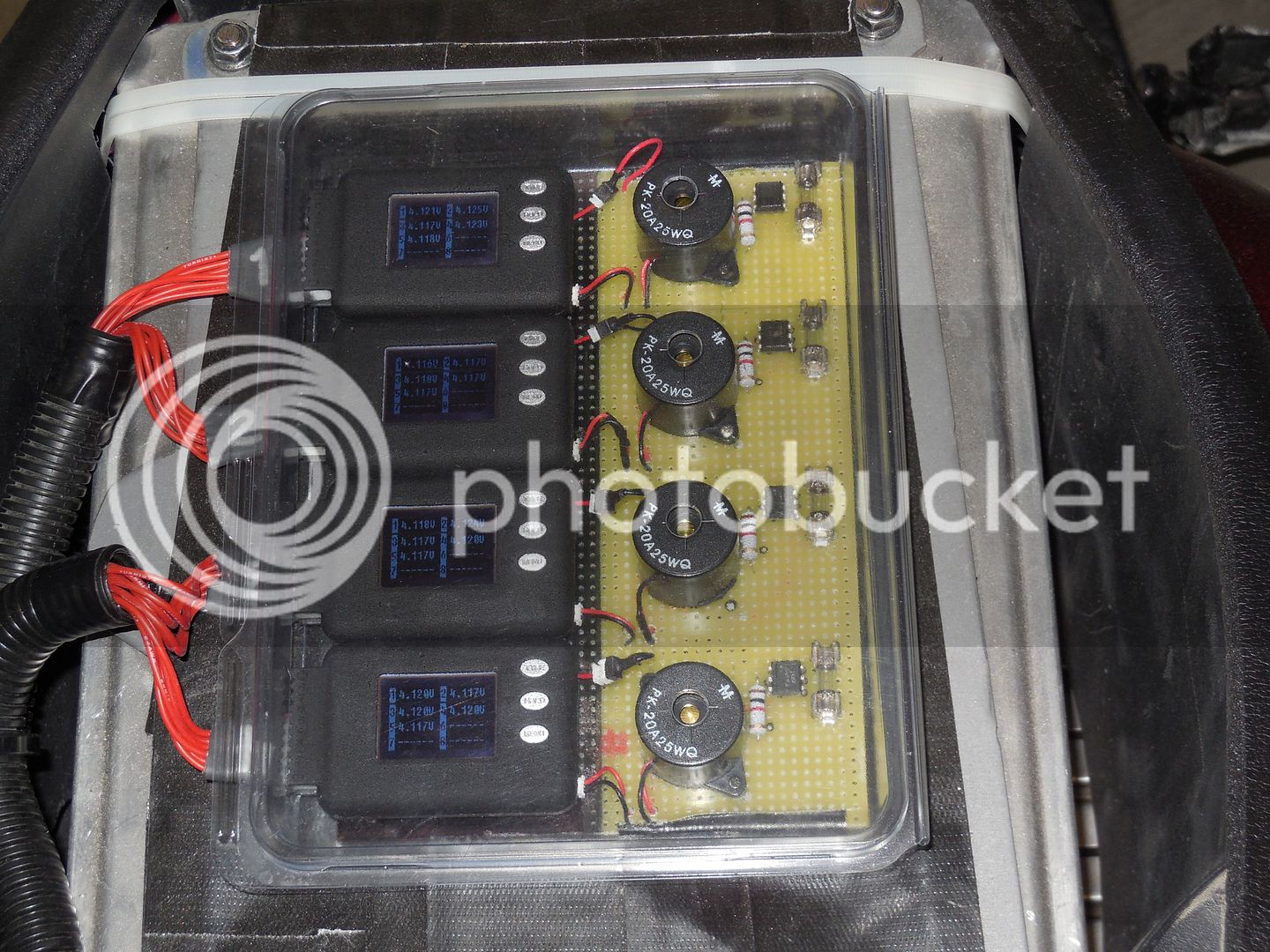mistercrash
10 kW
The Nissan Leaf modules are in the scooter. I knew it would be a tight fit but I didn't know it would be this tight. I had to ''massage'' a tiny portion of the frame to be able to slip the bottom stack of 5 modules. So tight that sadly I was not able to use the heating system I made for them.
There is no comparison between the power of these modules and what the 18650 Konions were giving me. I hope I never have to mess around with konions again.
There's a black plastic tub underneath the seat that is the storage compartment. I have to keep the top part of it as it holds the hinge for the seat and a couple of body panels screw into it. I got a little too happy trimming it and got rid of too much. I could've took my time and done a much better job. I have a new tub on order.
I went for a 32 km ride with the new Leafs, ran a couple errands, it was nice not to have range anxiety. There was a difference of 0.005V between the highest and lowest cell before the trip, the difference was 0.004V after the trip. Resting voltage was 81.6 before, 80.5 after. Under hard acceleration, the voltage sag was barely 3V. Awesome batteries.

There is no comparison between the power of these modules and what the 18650 Konions were giving me. I hope I never have to mess around with konions again.
There's a black plastic tub underneath the seat that is the storage compartment. I have to keep the top part of it as it holds the hinge for the seat and a couple of body panels screw into it. I got a little too happy trimming it and got rid of too much. I could've took my time and done a much better job. I have a new tub on order.
I went for a 32 km ride with the new Leafs, ran a couple errands, it was nice not to have range anxiety. There was a difference of 0.005V between the highest and lowest cell before the trip, the difference was 0.004V after the trip. Resting voltage was 81.6 before, 80.5 after. Under hard acceleration, the voltage sag was barely 3V. Awesome batteries.














